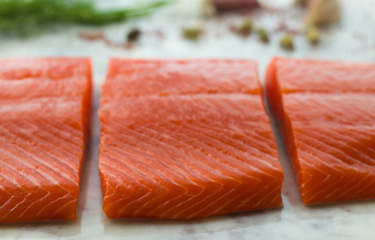Bristol Bay, Alaska is off to a strong start in what is expected to be another season hovering around all-time highs for both catch and value in the world’s largest sockeye salmon fishery. Fish were already pouring in to at least two of Bristol Bay’s four major river systems, with the run total sitting at eight million sockeye salmon on a preseason prediction of over 50 million sockeye. Fleets had harvested four million fish as of 30 June, according to Alaska’s KDLG, still far from the predicted harvest of around 37 million fish.
While early returns look good, test fishing indicates the run should sustain over a relatively long period of time, which should help the fishery avoid bottlenecks in fishing and processing. Last season’s compressed run, coupled with COVID-19 complications, strained Bristol Bay’s fishermen and processors. The Bristol Bay fishery also slogged through the pandemic last season with a disappointing base price of just USD 0.75 (EUR 0.63), but got early, unexpected news that Peter Pan Seafoods will pay a base price of USD 1.10 (EUR 0.93).
Typically, the base price in Bristol Bay is not announced until most of the landings are in, but Ken Taylor, Peter Pan’s vice president of purchasing, sales, and logistics, told SeafoodSource that Peter Pan’s new ownership wanted to give fishermen peace of mind.
“The USD 1.10 price was obviously a significant bump over 2020, almost a 60 percent increase, and we hope that it will help fishermen and their families plan for their finances for the year. It’s the first time in a while a processor has posted this early, and we know how important it is to our fleet,” Taylor told SeafoodSource.
Consumer research has shown a rise in pandemic seafood consumption, with wild-caught salmon in high demand. Farmed salmon prices are also high, which typically boosts wild prices, and a cheaper dollar works is working Bristol Bay’s favor. Taylor told SeafoodSource that it all adds to empty domestic freezers and buyers clamoring for product.
“We have a strong focus in the North America market, and if you look at the inventories around the country they are quite low. Everybody was pretty much cleaned out this year from last year’s stock. We have people lining up and wanting to give us commitments for this coming year’s season, so that gave us the confidence to go out there and present a commitment to the fleet,” Taylor said.
Meanwhile, a new summer retail marketing program rolled out by the Bristol Bay Regional Seafood Development Association (BBRSDA) was pushing Bay sockeye in 10 different major retail chains across the country. Retail participants from Seattle to Dallas to Cleveland presented customers with posters, recipes, and a QR code that leads to a website featuring a cooking guide, as well profiles of Bristol Bay fishermen and information on the health benefits of salmon.
Among supermarket chains taking place in the promotions are H-E-B in Texas, Hy-Vee in the Midwest, Wegman’s in the Northeast, Raley’s in Northern California, Heinen’s in Cleveland, and King Soopers/City Market in Colorado. The Pacific Northwest will see summer promotions in Quality Food Center (QFC), Rosauers, and New Seasons Market.
Lilani Dunn, the marketing manager for the Bristol Bay Regional Seafood Development Association (BBRSDA), heads the retail promotion program.
“Half of consumers are choosing seafood more often than last year, and more than one in four general consumers purchased seafood for the first time during the pandemic,” Dunn said.
The promotion is called Bristol Bay Sockeye Salmon and runs alongside the slogan of “Fast. Wild. Easy.”
Among the quick, simple recipes featured in the promotion are a potato chip-crusted salmon and salmon fried rice, Dunn said.
“Over one-third of shoppers were cooking more seafood at home during the pandemic, with most planning to continue. Bristol Bay Sockeye Salmon is capturing this momentum as an opportunity to show home cooks how foolproof, healthy and delicious it is, and to feel comfortable making Bristol Bay sockeye salmon a part of their standard meal rotation going forward,” Dunn added.
Bristol Bay is home to the world’s largest sockeye salmon run, which has provided more than 50 percent of the world’s sockeye salmon in recent years. Once a fishery that produced mostly canned salmon, chilling and handling campaigns along with shifts in processing and marketing have helped the fishery move toward higher-value fillets.
Photo courtesy of Bristol Bay Regional Seafood Development Association







